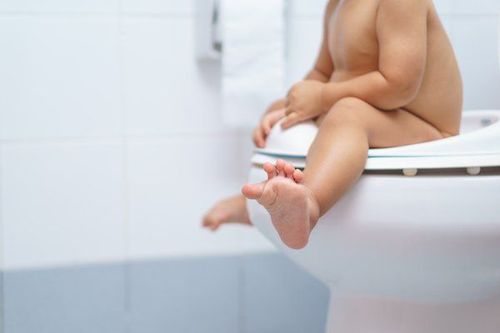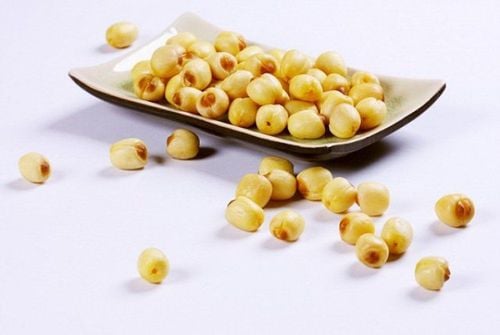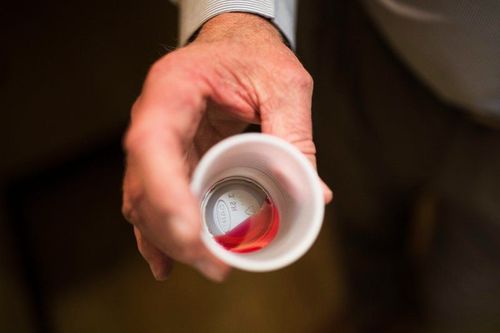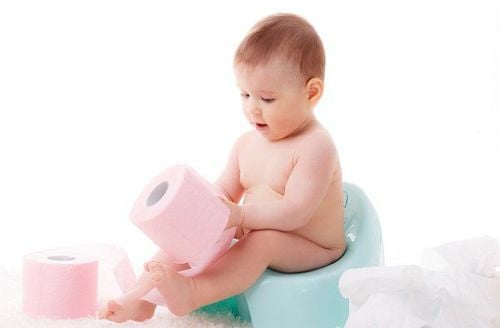This is an automatically translated article.
The article is professionally consulted by a Doctor of Gastrointestinal Endoscopy - Department of Medical Examination & Internal Medicine - Vinmec Danang International General Hospital.Tracking the color and smell of stools helps parents to diagnose diseases of children, especially digestive tract diseases.
1. What does a normal newborn's stool look like?
Newborns born for the first 1-2 days will pass a black or green, especially sticky stool. This is called meconium. Meconium consists of mucus, amniotic fluid, and substances absorbed by the baby while in the womb. Passing meconium shows that the baby's digestive system is working properly.After passing all the meconium, the baby will pass stool normally. An infant's poop depends on what the baby absorbs. At this stage are breast milk and formula milk. The characteristics of children's stool for these 2 types of milk are as follows:
1.1. Breastfed baby's stool The first drops of breast milk are called colostrum. Colostrum is rich in nutrients, very good for the baby's intestines, helps laxatives, stimulates the expulsion of meconium and best supports the baby's digestive system. After the baby is breastfed for about 2-3 days, stools will be discharged with characteristics such as:
Bright yellow stools. The stools have a liquid texture. Some children may pass stools that are slightly lumpy or lumpy At this time, children have a bowel movement many times a day, an average of 4-6 times / day. Babies can have a bowel movement right after breastfeeding. About 1-2 weeks later, when the baby's digestive system is used to the activities and breast milk supply, the baby's bowel movements are also less.
Trắc nghiệm: các chỉ số cần chú ý về sự phát triển thể chất của trẻ
Chiều cao, cân nặng của bé ở từng giai đoạn nên là bao nhiêu là bình thường, bao nhiêu là bất thường? Cùng ThS.BS Ma Văn Thấm điểm lại xem bạn đã nắm được các chỉ số phát triển thể chất của bé chưa nhé!The following content is prepared under supervision of Thạc sĩ, Bác sĩ y khoa, Ma Văn Thấm , Nhi , Phòng khám Đa khoa Quốc tế Vinmec Dương Đông(Phú Quốc)
1.2. Formula-fed babies' stools Formula-fed babies pass stool differently than breastfed babies. No matter how good formula milk is, it cannot be compared to breast milk. That's why the World Health Organization recommends breastfeeding for at least 24 months. However, for some reason, many mothers cannot breastfeed their babies but are forced to give formula milk, then parents can see that their baby's stools have features such as:
Large stool texture due to Formula milk is harder to digest than breast milk Stools that are yellow-brown or pale, not as bright as those of a breastfed baby Stool that has a strong smell The baby is prone to constipation

2. What is a normal baby stool change?
As children grow, their stools can have unusual changes. Parents need to know what are normal symptoms and what are warning signs of illness.2.1. When the mother does not have enough milk to feed her baby, runs out of milk or for another reason has to give formula milk, the baby's stools will change more or less. . Many children who do not like milk can become constipated. At first, you should switch or add formula slowly to give your baby's digestive system time to adapt to the new food.
2.2. Baby's poop when weaning When a baby starts eating solid foods, it means entering a new stage. Babies begin to get used to a completely different food than breast milk. Especially when babies eat solid foods, their stools will change markedly. Stools are thicker, smelly, and dark in color.
Besides, food can affect what the baby excretes. For example, when a child eats carrots, the stool may be bright orange. Or when a child eats vegetables or spinach, the stool may be dark green.
Many foods can go straight through the intestines and pass out intact in the child's stool. You can see the food your baby has eaten in the stools he passes. The reason is that the digestive system of children is not yet complete, still immature, so they cannot digest all foods, especially foods rich in fiber. This phenomenon will disappear as the child grows older.
3. Abnormal signs of illness in children's stools
3.1. Children with diarrhea Children have diarrhea when they have the following symptoms:Passing stools more often than usual Liquid, watery stools Stools spilling out of diapers or diapers There may be blood in the stools Breastfed babies Mother has many antibodies, so diarrhea is less common. Formula-fed babies are more likely to get sick because they are more likely to transmit pathogens through the digestive tract. Diarrhea can be caused by:
Infection Eating too much fruit or drinking too much juice Sensitivity or allergy to certain foods Reactions to medications Reactions to formula Go Liquid stools during teething In addition, in older children, diarrhea can also be a sign of severe constipation. Fresh stools leak through trapped hard stools. Diarrhea symptoms may improve and go away in 24 hours without treatment. However, if the condition becomes more serious, the child has loose stools more than 6 times a day, the child should be taken to the hospital for examination. Avoid excessive watery bowel movements that cause dehydration in children.
3.2. Constipation Constipation is quite common in children. Children with constipation have symptoms of difficulty passing stools, flushing of the face, nervousness, and sweating. The child may be constipated if:
The child has difficulty passing stools The stools are harder than usual, may be too large or very small The abdomen is tight, distended, bloated, there is blood in the stools The child may have anal fissures and bleeding after when trying to pass stool. Breastfed babies are less likely to be constipated than formula-fed babies. This is because breast milk is designed to be suitable for each stage of the baby's development, making stools soft, good for the digestive system. Causes of constipation in children can be due to:
The child has a fever The child is dehydrated Changes in the child's food The daily amount of fluid absorbed by the child changes Due to the effect of certain medications Many children have pain, Anal fissures make children afraid to have a bowel movement and hold back so they don't get hurt, leading to constipation for a long time. This vicious situation can make constipation worse. When the child is constipated, it is necessary to give the child a lot of water to drink and increase the feeding time of the child. If the child is already eating solids, increase the fiber-rich foods in the child's menu. Combine abdominal massage and exercise for children with the posture of legs stretching up and down like riding a bicycle. This will make it easier for the child to go outside. If the child's constipation is getting worse, especially if there is blood in the stool, the child should be taken to the doctor.
3.3. Green stools Usually, stools are bright yellow or yellow-brown. If the baby's stool turns green, it means that the baby is absorbing too much lactose. Lactose is a natural sugar found in milk. Breastfed babies can experience this phenomenon if they only take the first milk and not the last milk. The mother should let the baby suckle all of one breast and then switch to the other. In addition, green stools can be caused by a number of other reasons such as:
Effects of certain types of formula Reactions to certain foods Side effects of drugs, the most common is iron The child's stomach has a problem If the child's green stools do not subside in about 1 day, the child should be taken to the hospital to check and determine the exact cause

In addition, pale stools can also be a sign of an infection or a problem with the liver.
3.5. Bloody stools Bloody stools can be caused by:
Children with constipation Irritated bowels Intestinal infections Allergies It is best to see fresh blood in the child's stool, parents should take the child to the doctor for diagnosis. Identify possible problems in children and handle them promptly.
Vinmec International General Hospital is one of the leading hospitals in the country in terms of examination, diagnosis and treatment of digestive diseases, especially in infants and young children. Vinmec gathers a team of experienced doctors, modern equipment system and international standard services.
Please dial HOTLINE for more information or register for an appointment HERE. Download MyVinmec app to make appointments faster and to manage your bookings easily.














